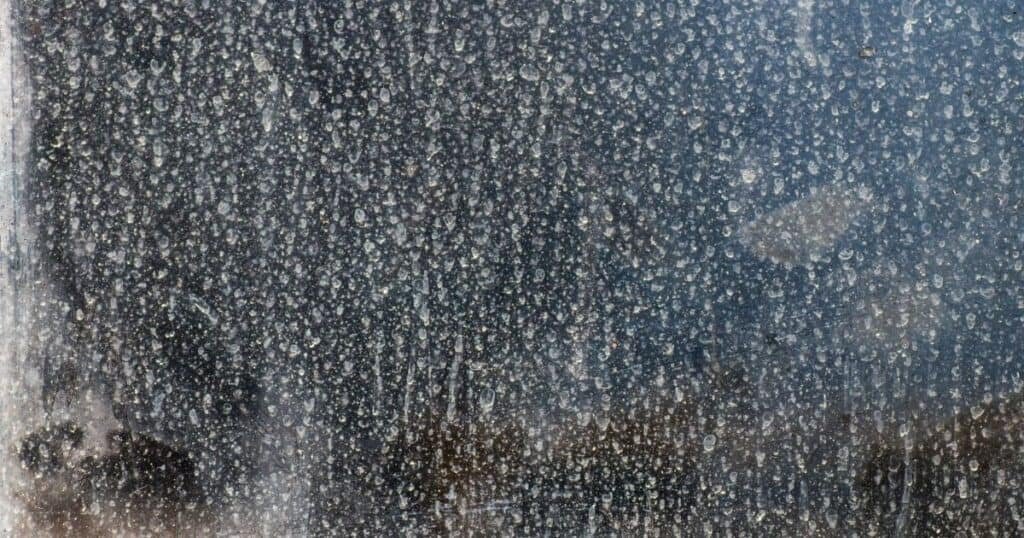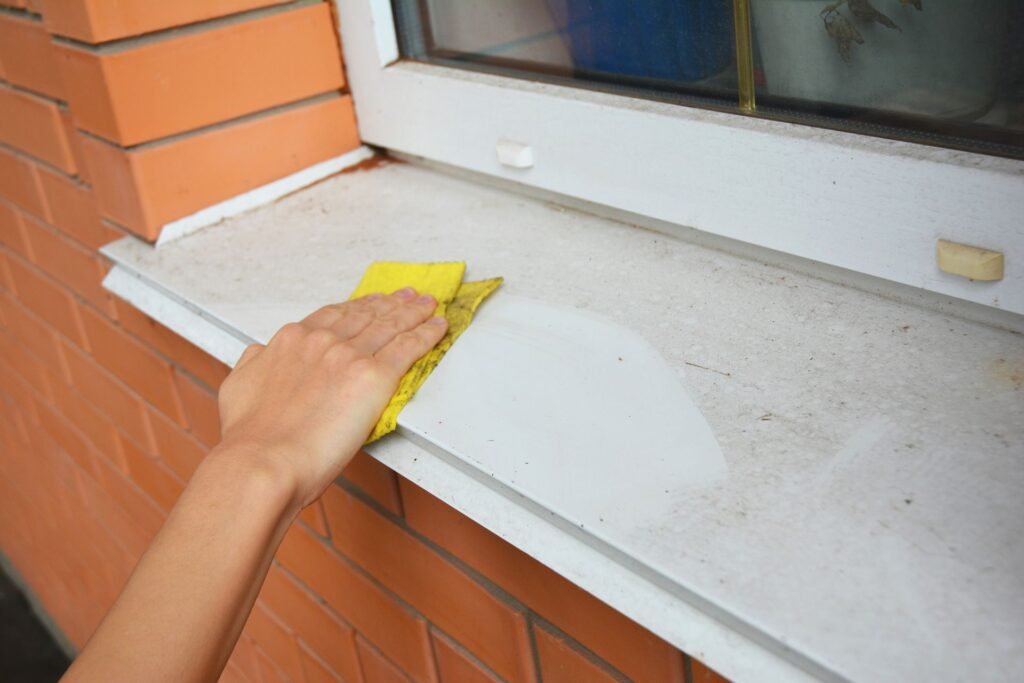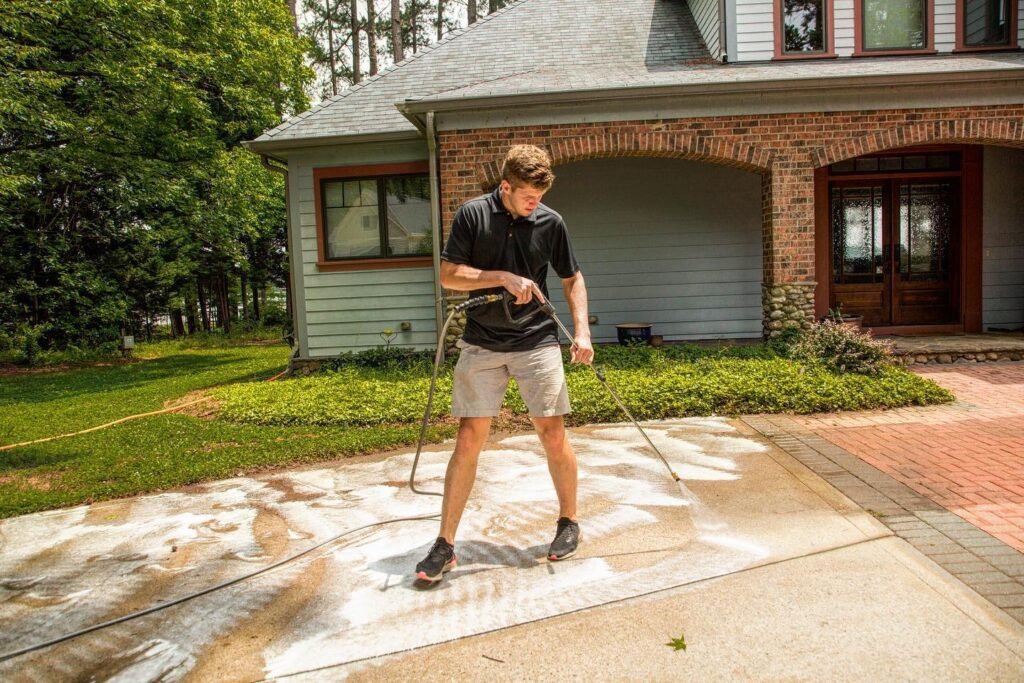

Cleaning your windows can seem like a daunting task, but with the right tools, techniques, and a bit of know-how, it can be straightforward and rewarding. In this comprehensive guide, we’ll explore everything you need to know about DIY window cleaning. From understanding the basics to mastering advanced techniques, you’ll find all the tips and tricks you need to achieve spotless, streak-free windows.
Why Clean Windows Matter
Windows are an integral part of any home, serving as portals to the outside world, sources of natural light, and elements that contribute to the overall aesthetic appeal. Clean windows not only enhance your home’s appearance but also play a crucial role in maintaining its value and efficiency.
Why is window cleaning important? Here are a few reasons:
- Enhanced Curb Appeal: Clean windows instantly improve the look of your home, making it more inviting and well-kept. This is especially important if you are planning to sell your house.
- Better Natural Light: Dirty windows can block out sunlight, making your home feel darker and less inviting. Clean windows allow maximum light to penetrate, brightening up your living spaces.
- Increased Energy Efficiency: Clean windows can improve your home’s energy efficiency. When windows are dirty, they can cause heat to be trapped or lost, increasing your heating or cooling costs.
- Extended Window Lifespan: Regular cleaning prevents the build-up of grime and debris that can cause permanent damage to the glass and frames, leading to costly repairs or replacements.
Now that we understand the importance of keeping windows clean, let’s delve into the basics of window cleaning to set a solid foundation for your DIY efforts.
Understanding the Basics of Window Cleaning
The Benefits of Regular Window Cleaning
Regular window cleaning is not just about keeping your windows looking good; it’s also about maintaining the health and efficiency of your home. Here’s why regular window cleaning should be part of your home maintenance routine:
- Improved Indoor Air Quality: Dust, allergens, and pollutants can accumulate on windows, contributing to poor indoor air quality. By cleaning your windows regularly, you reduce the presence of these irritants.
- Extended Lifespan of Windows: Dirt, grime, and environmental contaminants can degrade window materials over time. Regular cleaning helps remove these damaging elements, preserving the integrity of your windows.
- Cost Savings: By maintaining your windows, you avoid expensive repairs and replacements. Clean windows also contribute to better insulation, potentially lowering your energy bills.
Fact: According to the U.S. Department of Energy, windows account for approximately 25-30% of residential heating and cooling energy use. Keeping them clean can help improve energy efficiency.
What Causes Window Stains?
Windows can get dirty for a variety of reasons, and understanding these causes can help you prevent build-up and maintain cleanliness longer.
Common Causes of Window Stains:
- Hard Water Deposits: Often caused by rainwater that contains minerals, these deposits can leave unsightly white spots on glass surfaces.
- Environmental Pollutants: Dust, pollen, and industrial pollutants can settle on window surfaces, especially in urban or suburban areas.
- Tree Sap and Pollen: Trees near your home can release sap and pollen, which stick to windows and create a sticky residue that is difficult to clean.
- Bird Droppings and Insect Debris: Windows attract birds and insects, leaving behind droppings and other debris that can cause stains.
To keep windows clean, it’s important to address these factors regularly. Using the right techniques can make this task easier and more effective.
When to Clean Your Windows: Seasonal Considerations
Choosing the right time to clean your windows is crucial for achieving the best results. Here are some seasonal considerations to keep in mind:
- Spring: This is an ideal time for window cleaning as you remove the dirt and grime accumulated over winter. Pollen levels might be high, so cleaning windows after pollen has settled can prevent streaks.
- Fall: Another great time to clean windows as you remove dust, debris, and pollen from the summer. Preparing your windows for the winter months can also help with insulation and energy efficiency.
- Avoid Hot, Sunny Days: Cleaning windows in direct sunlight can cause the cleaning solution to dry too quickly, leading to streaks. Opt for cloudy days or early morning/late afternoon for the best results.
Tip: Clean your windows at least twice a year for optimal results, or more frequently if you live in an area with high pollution or harsh weather conditions.
Preparing for DIY Window Cleaning
Before diving into the window cleaning process, it’s essential to prepare properly. This involves gathering the right tools, selecting the best cleaning solutions, ensuring safety, and understanding effective cleaning methods. Proper preparation will make the cleaning process smoother, more efficient, and safer.
Essential Tools and Equipment for DIY Window Cleaning
Having the right tools is crucial for achieving clean, streak-free windows. Here’s a list of essential equipment every DIY window cleaner should have:
- Squeegee: The most important tool for window cleaning, a squeegee helps remove water and cleaning solutions from the glass without leaving streaks.
Tip: Invest in a high-quality squeegee with a replaceable rubber blade for the best results. - Microfiber Cloths: These are perfect for wiping down frames and removing any remaining streaks. Microfiber cloths are highly absorbent and can capture dirt and dust effectively.
- Scrubber or Sponge: A scrubber with a sponge or microfiber sleeve is ideal for applying the cleaning solution to the window. It can effectively scrub away dirt and grime without scratching the glass.
- Bucket: A sturdy bucket is essential for mixing and holding your cleaning solution. Consider using two buckets—one for soapy water and one for rinsing.
- Extension Pole: This tool is crucial for reaching high or awkwardly placed windows without using a ladder. Most extension poles are compatible with squeegees and scrubbers.
- Ladder: If you need to clean second-story windows or higher, a stable ladder is a must.
Safety First: Always have someone hold the ladder, and ensure it’s on a flat, stable surface. - Cleaning Solution: You can either purchase a commercial window cleaner or make your own using common household ingredients (more on this in the next section).
Case Study: A homeowner in Seattle switched to using a high-quality squeegee and microfiber cloths for her bi-annual window cleaning routine. She reported a 50% reduction in time spent cleaning and noticed fewer streaks compared to using paper towels and a lower-quality squeegee.
Choosing the Right Cleaning Solutions: Store-Bought vs. Homemade
Store-Bought Cleaners:
- Pros: Convenient, effective against various types of dirt and grime, often come with additional features like streak prevention.
- Cons: Can be expensive, may contain harsh chemicals that could be harmful to the environment or irritate sensitive skin.
- Popular Options: Products like Invisible Glass Cleaner and Windex are popular choices for their effectiveness in achieving a streak-free shine.
Homemade Cleaners:
- Pros: Cost-effective, environmentally friendly, and made from common household items.
- Cons: May require more effort to mix, can sometimes leave streaks if not used properly.
- DIY Recipe: A simple and effective homemade glass cleaner can be made by mixing 2 cups of water, 1/2 cup of white vinegar or cider vinegar, 1/4 cup of rubbing alcohol (70% concentration), and 2 drops of grease-cutting dish soap.
Optional: Add a few drops of essential oil, like orange or lemon, for a pleasant scent.
| Type | Pros | Cons | Best Use Case |
|---|---|---|---|
| Store-Bought | Convenient, effective, streak prevention | Can be expensive, may contain harsh chemicals | Quick, effective cleaning, less effort |
| Homemade | Cost-effective, environmentally friendly | Requires preparation, potential streaking | Routine cleaning, eco-friendly options |
Safety First: Tips for Cleaning High Windows Safely
Safety is paramount when it comes to cleaning windows, especially for windows that are high or hard to reach. Here are some safety tips to keep in mind:
- Use a Stable Ladder: Ensure your ladder is on a flat, even surface. For added safety, use a ladder stabilizer, which can help prevent the ladder from slipping or shifting.
- Have a Spotter: Always have someone hold the ladder while you’re on it to provide additional stability and reduce the risk of falls.
- Wear Appropriate Gear: Non-slip shoes, gloves, and, if necessary, a safety harness for higher windows can help prevent accidents.
- Consider Extension Tools: Instead of using a ladder, use extension poles for high windows. These can safely reach second-story windows without the risk associated with ladder use.
- Avoid Leaning: Never lean too far from the ladder to reach a window. Instead, climb down and move the ladder to a better position.
Quote from a Safety Expert: “The leading cause of injuries during window cleaning is improper ladder use. Always prioritize safety over speed to avoid accidents.” – Mart Davis, Home Safety Specialist.
The Two-Bucket Method: A Pro’s Secret for Spotless Windows
The two-bucket method is a professional window cleaner’s secret weapon for achieving spotless, streak-free windows. Here’s how it works:
- Bucket One – Soapy Water: Fill the first bucket with your cleaning solution. This bucket will be used for washing the windows.
- Bucket Two – Clean Water: Fill the second bucket with clean water. This bucket will be used to rinse your squeegee or sponge, preventing dirt and debris from being reapplied to the window.
Step-by-Step Guide to DIY Clean Windows
Now that you have prepared all the necessary tools and cleaning solutions, it’s time to start cleaning. This section provides a detailed, step-by-step guide to help you achieve crystal-clear windows, using tried-and-tested techniques that minimize effort while maximizing results.
Preparing Your Windows for Cleaning
Preparation is key to a successful window cleaning session. Before applying any cleaning solution to your windows, it’s important to remove all dust and debris from the frames and screens. Here’s how to do it effectively:
Steps to Prepare Your Windows:
- Remove Curtains or Blinds: Take down any curtains or blinds and wash them according to their care instructions. This prevents dust from settling back onto the freshly cleaned windows.
- Dust Window Frames and Sills: Use a microfiber cloth or a duster to remove dust and cobwebs from the window frames, sills, and tracks. This prevents the dust from turning into a muddy residue when mixed with cleaning solutions.
- Clean Window Screens: Remove the screens and clean them separately using a garden hose or in your shower with a gentle spray. Scrub gently with a soft brush and soapy water, then rinse thoroughly and allow them to dry completely before reinstallation.
- Vacuum Window Tracks: Use a vacuum with a brush attachment to remove dirt and debris from the window tracks. This step is especially important for sliding windows, where dirt can accumulate and cause operational issues.
- Inspect Windows for Damage: Before you start cleaning, check for any signs of damage, such as cracks, chips, or broken seals, which might need professional attention.
Fact: Dust and dirt can cause scratches on window glass if not properly removed before cleaning. Always start with a clean surface to avoid damage.
The Proper Way to Use a Squeegee for Streak-Free Results
A squeegee is your best friend when it comes to achieving streak-free windows. Here’s how to use it like a pro:
Step-by-Step Squeegee Technique:
- Wet the Window Thoroughly: Apply your cleaning solution generously with a scrubber or sponge. Make sure to cover the entire window, paying extra attention to any spots with hardened grime.
- Start at the Top: Place the squeegee at the top left corner of the window (if you’re right-handed) or the top right corner (if you’re left-handed). Tilt it slightly to allow the water to flow downwards.
- Pull Down Smoothly: Pull the squeegee down the glass in a straight, smooth motion. Apply even pressure to ensure all the water is removed. At the bottom of the stroke, wipe the squeegee blade with a clean, dry cloth to remove any dirt and excess water.
- Overlap Your Strokes: For the next stroke, overlap the first by about two inches. This overlap prevents streaks and ensures a seamless finish.
- Dry the Edges: Use a microfiber cloth to wipe any remaining water from the edges of the window, especially at the bottom where drips can accumulate.
- Repeat Until Complete: Continue this process, working your way across the window until it’s completely clean.
Troubleshooting Common Window Cleaning Issues
Additional Tips for Maintaining Clean Windows
Even with the best preparation and techniques, you might encounter some common window cleaning challenges. Here’s how to troubleshoot them:
Common Issues and Solutions:
- Streaks After Cleaning:
Cause: Often caused by using too much cleaning solution or not drying the windows properly.
Solution: Use less cleaning solution and make sure to dry the windows thoroughly with a microfiber cloth or coffee filter. - Residue or Film on Glass:
Cause: This could be due to using a cleaner that’s too strong or not rinsing thoroughly.
Solution: Use a mild cleaning solution and rinse well with clean water before drying. - Water Spots or Mineral Deposits:
Cause: Usually from hard water or rainwater that has dried on the window.
Solution: Use a vinegar solution to dissolve mineral deposits and rinse well with clean water. For stubborn spots, a commercial hard water stain remover may be necessary. - Scratches on Glass:
Cause: Can occur from using abrasive tools or scrubbing too hard.
Solution: Always use soft, non-abrasive tools like microfiber cloths and ensure any debris is removed before cleaning. If scratches are already present, consider using a glass polishing compound or seeking professional help. - Dirt or Streaks Inside Double-Pane Windows:
Cause: This issue is often due to a broken seal allowing moisture and dirt to get inside.
Solution: Unfortunately, this is not a DIY fix. You may need to replace the glass or the entire window.
Advanced Tips for DIY Enthusiasts
Once you’ve mastered the basics of window cleaning, you may want to explore some advanced techniques to tackle unique challenges and achieve an even better finish. This section delves into specialized methods for cleaning different types of windows, eco-friendly alternatives, and handling tough grime effectively.
Cleaning Specialty Windows: Stained Glass, Double-Hung, and More
Not all windows are created equal. Specialty windows, such as stained glass, double-hung, and bay windows, require specific care to maintain their beauty and functionality. Here’s how to handle these unique types:
Stained Glass Windows:
- Cleaning Method: Use a gentle, pH-neutral cleaner to avoid damaging the colored glass and leading or cames (the metal that holds the glass pieces together). A mild solution of distilled water and a few drops of dish soap works well.
- Technique: Apply the solution using a soft sponge or cloth, and gently wipe the surface. Avoid abrasive scrubbing, which can scratch the glass or damage the leading.
- Drying: Use a soft, lint-free cloth to dry the stained glass. Buff carefully to avoid streaks.
Double-Hung Windows:
- Cleaning Method: Double-hung windows often tilt inward, making it easier to clean both sides. Remove the sashes (if possible) and lay them flat on a clean surface.
- Technique: Clean each sash individually using the standard squeegee method. For older windows with paint or varnish, avoid using harsh chemicals that could strip the finish.
- Drying: Dry each pane thoroughly with a microfiber cloth before reinstalling.
Bay and Bow Windows:
- Cleaning Method: Bay and bow windows consist of multiple panes at different angles, which can make them tricky to clean.
- Technique: Use an extension pole with a squeegee to reach high or awkward angles. Start at the top and work your way down, using overlapping strokes to prevent streaks.
- Drying: Wipe down each section with a microfiber cloth to remove any remaining water or solution.
How to Handle Tough Grime: Tree Sap, Paint, and Hard Water Stains
Sometimes, regular cleaning isn’t enough to remove tough grime. Here are some techniques for dealing with more stubborn dirt and stains on your windows:
Removing Tree Sap and Sticky Residue:
- Isopropyl Alcohol: For tree sap or sticky residue, use a cloth soaked in isopropyl alcohol to dissolve the sap. Rub gently in a circular motion to lift the residue without scratching the glass.
- WD-40 or Mineral Spirits: These products can also help dissolve sticky substances. Spray or apply a small amount to a cloth and wipe the area clean. Rinse thoroughly with a vinegar solution to remove any oily residue.
Cleaning Paint and Construction Debris:
- Razor Blade Scraper: A razor blade scraper can be used to carefully remove paint splatters or construction debris. Important: Always use the blade at a 45-degree angle to avoid scratching the glass.
- Goo Gone or Similar Products: For more extensive paint or adhesive residue, apply Goo Gone or a similar product. Let it sit for a few minutes before scrubbing gently with a non-abrasive sponge.
Dealing with Hard Water Stains:
- Vinegar Soak: For windows with hard water stains, soak a cloth in white vinegar and place it over the affected area. Let it sit for 10-15 minutes, then scrub gently with a non-abrasive sponge.
- Commercial Hard Water Stain Remover: Products like CLR (Calcium, Lime, Rust remover) are specifically designed to tackle mineral deposits. Follow the manufacturer’s instructions for safe and effective use.
By mastering these advanced techniques, you can tackle any window cleaning challenge, leaving your windows spotless and enhancing the overall look and feel of your home.
Final Tips and Maintenance Advice
Keeping your windows clean and clear isn’t just about one-time cleaning; it’s about maintaining that shine for months to come. Here are some effective strategies to help your windows stay cleaner for longer:
Routine Maintenance Tips:
Regular Dusting: Dust and dirt are the primary culprits that dull the shine of windows. Regularly dust the window sills, frames, and screens using a microfiber cloth or a soft brush attachment on your vacuum. This prevents the accumulation of dust and makes it easier to clean the windows next time.
Keep Surroundings Clean: Your windows will stay cleaner if the surrounding environment is also clean. Trim nearby trees and bushes that might shed leaves, sap, or pollen onto your windows. Keep the exterior walls and eaves clean to minimize dirt transfer during rain or wind.
Apply a Water-Repellent Coating: Products like Rain-X can be applied to window glass to create a hydrophobic surface that repels water, dirt, and grime. This is especially useful for windows exposed to rain or sprinkler systems. Simply apply the product according to the manufacturer’s instructions and enjoy the long-lasting benefits.
Use Window Screens: Screens can catch a lot of the dust, pollen, and debris that would otherwise land on your windows. Make sure to clean your screens regularly to prevent the buildup of dirt that could transfer to the glass.
Monitor Weather Conditions: Try to plan your window cleaning around weather conditions. Avoid cleaning during windy days, which can blow dirt and dust back onto your clean windows, and after rainstorms, which can leave water spots.
The Importance of Clean Windows for Your Home
Regular window cleaning not only improves the aesthetic appeal of your home but also contributes to a healthier, more comfortable living environment. By following the tips and techniques outlined in this guide, you can maintain your windows in pristine condition, ensuring that they continue to enhance your home’s beauty and efficiency.
Summary of Key Tips:
- Clean your windows at least twice a year, or more frequently if needed.
- Use a two-bucket system and a squeegee for streak-free results.
- Regularly dust window sills, frames, and screens to prevent dirt build-up.
- Apply water-repellent coatings and use window screens to keep windows cleaner for longer.
- Plan cleaning sessions around weather conditions to maximize the longevity of your clean windows.
By taking these steps, you’ll not only enjoy the view from your clean windows but also enhance the overall value and comfort of your home. Remember, a little regular maintenance goes a long way in keeping your windows—and your home—looking their best.
Get Your FREE Quote Now!
Ready to experience sparkling clean windows?
Request your free, instant quote today. Our simple contact form makes it easy to get started.
Links









